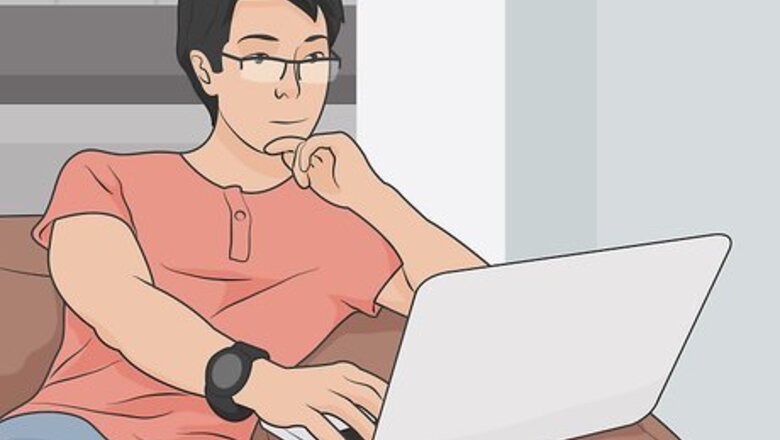
views
Analyzing New Information

Review the source of the information. Take a closer look at social media posts or stories being spread by word-of-mouth. Check to see if a reputable organization, like the World Health Organization (WHO) or the Centers for Disease Control and Prevention (CDC) has verified the information, or if it’s just a rumor. Additionally, hold your loved ones accountable by asking them when and where they heard something, instead of accepting their words as instant truth. For instance, you can say something like: “That’s an interesting perspective about how COVID-19 is spreading. Would you mind telling me where you first heard that?” Some search engines, like Google, or social media platforms like Facebook and Instagram will guide you to more authoritative sources with a special alert.

Dive into the credentials of the author. If the article isn’t written by an established government or health organization, look up the author on a search engine. Double-check what kinds of articles the author or journalist has written in the past. If they typically write comprehensive, health-related articles, you can probably trust the information they’re sharing. If they don’t have accredited experience or background in health-related topics, get your information from a different source. For instance, if the article is written by a tabloid journalist, you shouldn’t consider it to be authoritative.

Cross-check facts with multiple sources. Try not to get all of your information from a single source, even if that source is credible. Instead, reference several high-quality sources to get a more well-rounded and informed understanding of the current events surrounding COVID-19. Your own claims and statements will sound much more authoritative if they’re backed by multiple experts. For example, use sources like the CDC, WHO, and the United Nations (UN) to support your claims.

Share factual sites with your friends and family. Ask your friends and family members where they’re receiving their updates about COVID-19. If they’re learning new information “through the grapevine,” encourage them to check out informative, factual websites, like WHO’s mythbuster infographics (which you can find here: https://www.who.int/emergencies/diseases/novel-coronavirus-2019/advice-for-public/myth-busters). Try to comfort your loved ones and talk them down from any hysteria they might be feeling. Some authoritative and reliable sources you can reference and share include: WHO, CDC, UN, the National Institutes of Health (NIH), state government web pages, and university resources. Less reliable sources include unsourced social media posts, tabloids or sensationalized articles, rumor mill websites, junk science sites, and satire sites. Remind your friends and family that it’s perfectly okay to feel uneasy and anxious.
Focusing on the Facts
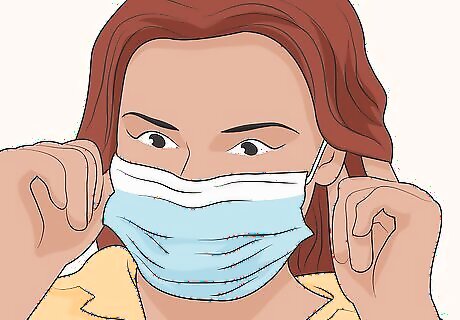
Note that anyone can get sick from COVID-19. Ignore any social media posts or idle gossip saying that people from certain backgrounds or geographies are more likely to contract or spread the virus. Anyone can get COVID-19, regardless of their ethnicity. For instance, if someone says something xenophobic, or prejudiced against a certain group, regarding COVID-19, you can say something like: “You shouldn’t say things like that. It’s a proven fact that anyone can catch coronavirus, regardless of their background.”

Review the common symptoms of COVID-19 to avoid unnecessary panic. Note that the novel coronavirus (COVID-19) has a lot of similarities to other common illnesses. If you or a loved one gets a fever, headache, sore throat, cough, or other similar symptoms, don’t panic or assume the worst. COVID-19 manifests in different ways depending on the person. For instance, if you have a fever, that doesn’t automatically mean that you have COVID-19. Call your doctor or medical provider at the first sign of symptoms. For specific guidance, always talk to a doctor or healthcare professional before choosing a treatment plan.
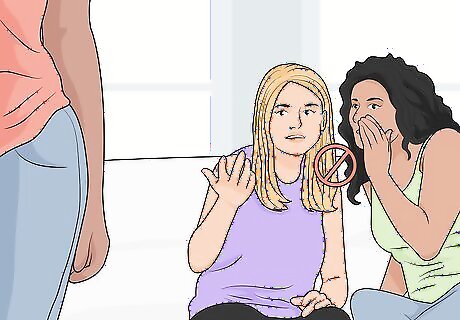
Don’t discriminate against someone who was recently in quarantine. It’s perfectly normal to feel scared and uneasy during these uncertain times—in fact, countless people share those exact same feelings, including people who have recently left quarantine. Remember that people leaving quarantine are deemed healthy by medical professionals, and are perfectly safe to be around. After quarantining, those individuals will need a lot of support since they’ve been isolated for so long.
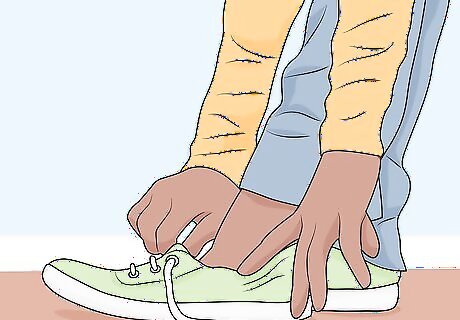
Remind yourself that your shoes aren’t likely to spread COVID-19. You may have read online or heard somewhere that the bottoms of your shoes can track COVID-19 into your home. While this is a valid concern, credible organizations like the World Health Organization (WHO) have debunked this. If you’d like to be really careful, leave your shoes in the garage or another separate area instead of wearing them inside. You can designate a specific part of your home as a “shoe area,” which will prevent the spread of any germs.
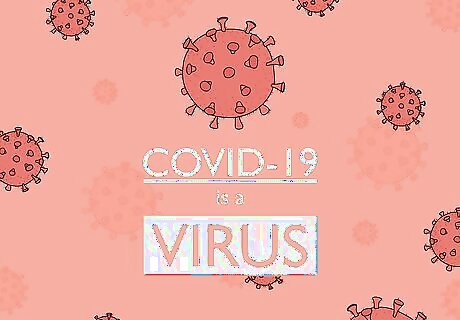
Classify COVID-19 as a virus, not as a kind of bacteria. Keep in mind that antibacterial treatments won’t work against the novel coronavirus, since the disease is caused by a virus. Only use antibiotics and other treatments if your illness is determined to be a bacterial infection.
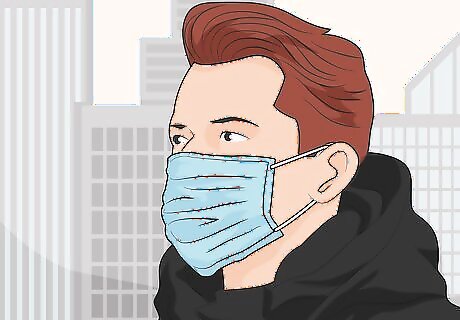
Wear medical masks without fear of breathing in any extra CO2. Cloth and/or medical masks can be a tricky topic to navigate, especially since there are so many different opinions. Ignore anyone who says that masks lead to carbon dioxide inhalation, or prevent you from breathing in enough oxygen. It’s perfectly safe to wear masks for a long period of time!

Stay calm by realizing that the vast majority of COVID-19 patients recover. Don’t ride on the wave of panic, even if you hear some scary statistics on the news. If you suspect that you’re coming down with the novel coronavirus (COVID-19), call a medical professional for advice and stay at home so you don't spread the infection to others. Even if it's not usually fatal, COVID-19 can cause long-lasting health impacts that we are still learning about. The best things you can do to protect yourself and your community are: listen to the experts, practice social distancing, wash your hands, and wear a mask.
Ignoring False Claims

Disregard claims about new “cures” for COVID-19. You may hear a lot of rumors or other outlandish stories on how you can prevent or cure yourself from COVID-19. While very effective vaccines are available that largely prevent serious disease, there’s no official cure for the virus. Instead, quickly consult your doctor to get advice and follow their treatment plan For instance, some people believe that drinking alcohol can lower your risk of COVID-19, when it actually makes you more prone to future health issues, like a weakened immune system and high blood pressure.
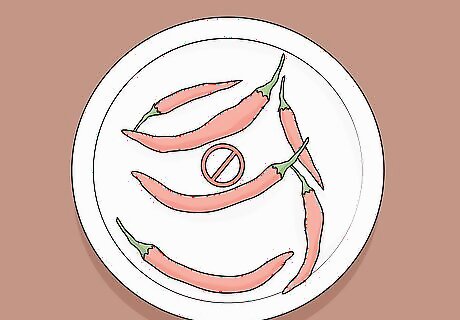
Don’t eat pepper as a way to prevent COVID-19. Disregard any rumors that sprinkling hot pepper into your food will cure COVID-19 or prevent you from catching it. There is no science to back these claims—instead, continue eating a healthy, balanced diet, and do your best to exercise on a regular basis. Currently, there are no medicines or foods that are proven to cure or prevent coronavirus.
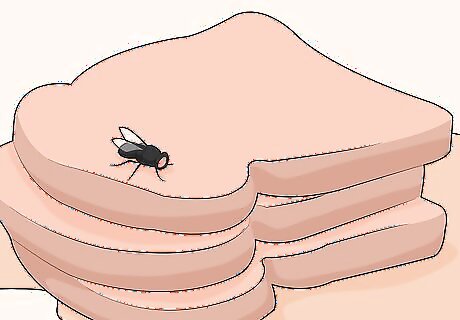
Note that houseflies and mosquitoes can’t spread coronavirus. Don’t panic if a fly starts buzzing around your home, or if you notice a mosquito bite somewhere on your body. As pesky as these bugs are, they won’t spread COVID-19 or increase your risk of catching it. Mosquitoes can, however, spread other illnesses like malaria, West Nile Virus, or Jamestown Canyon Virus.
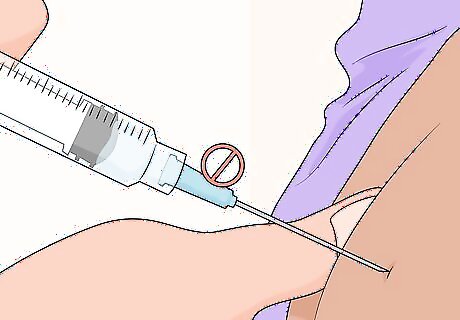
Do not inject yourself with alcohol or bleach to prevent COVID-19. Never inject or drink bleach, even if you’ve heard claims recommending this treatment. Bleach is very toxic, and will create a host of new problems, like potential organ damage. If you suspect you’re coming down with COVID-19, schedule a test or call a doctor for advice. You may have a different illness altogether!

Disregard information coming from fringe, third-party groups. Keep in mind that there are a lot of conspiracy theories springing up about COVID-19, like how the virus was manufactured, or that 5G phone networks are spreading the disease. Don’t give too much credit to any word-of-mouth theories which are not based on evidence; in these uncertain times, it’s really easy for false facts to spread quickly. Some popular claims include that the virus is spread through 5G networks; that certain wealthy individuals are responsible; that the virus was manufactured in a lab; that the US military introduced COVID-19 to China; or that COVID-19 isn’t actually real. All of these claims are proven to be false, but are still talked about a lot.

Correct your loved ones if they’re sharing misinformation. Don’t let false facts control the narrative—instead, politely interject and clarify any misinformation as you hear it. Try to be kind and gentle as you correct your family members, reminding them that there’s a lot of confusing information going around. You can also help reiterate the need for fact-based information and underscore the need for vigilance by signing up for the UN's Verified campaign at https://shareverified.com/en.

















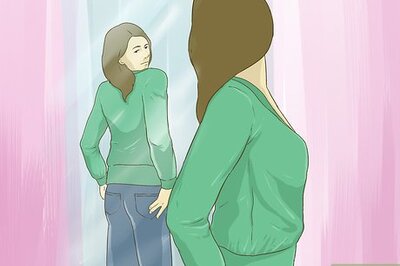


Comments
0 comment